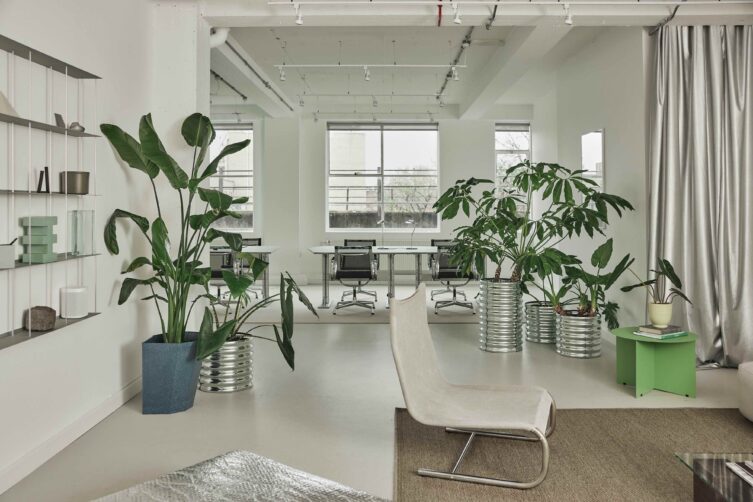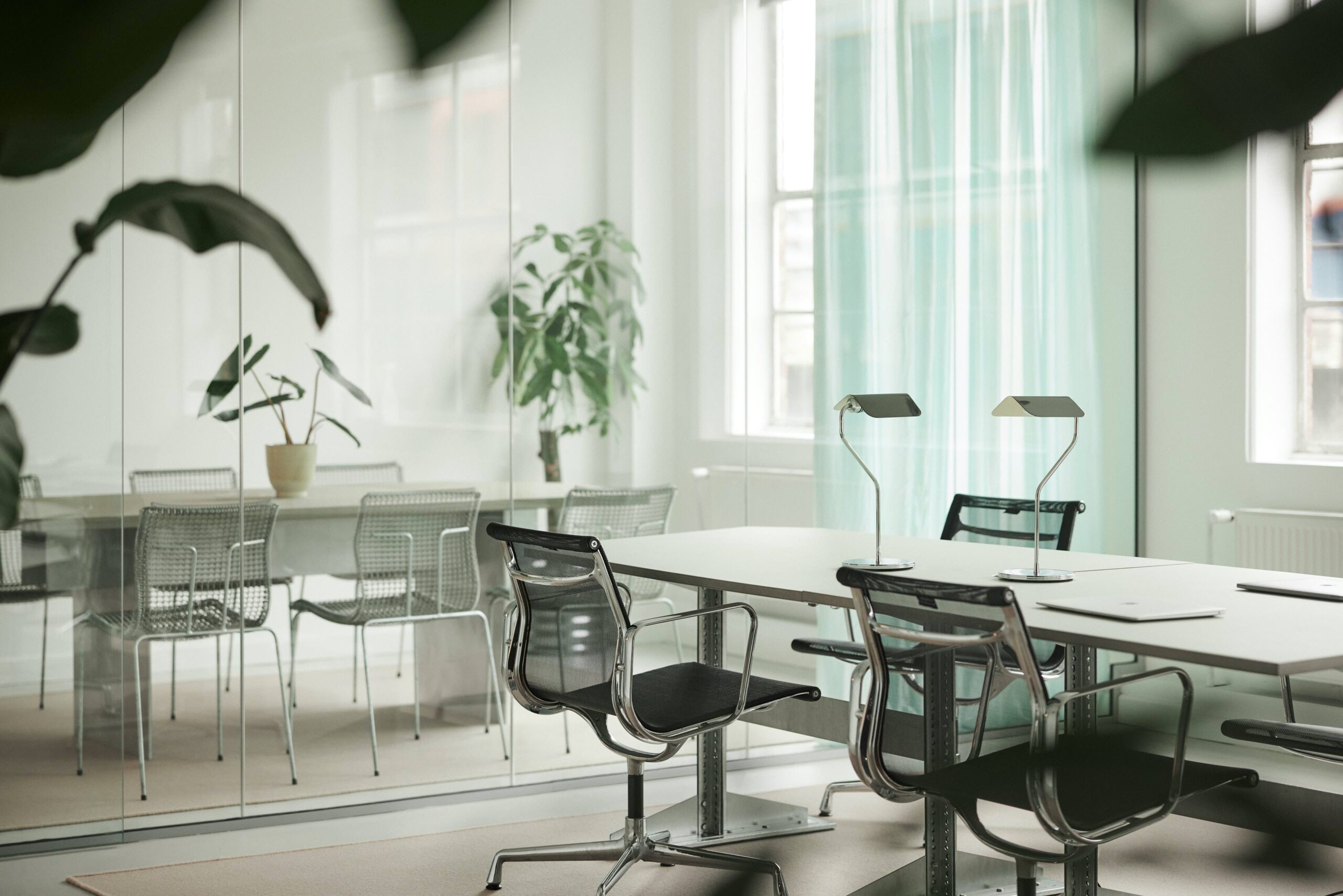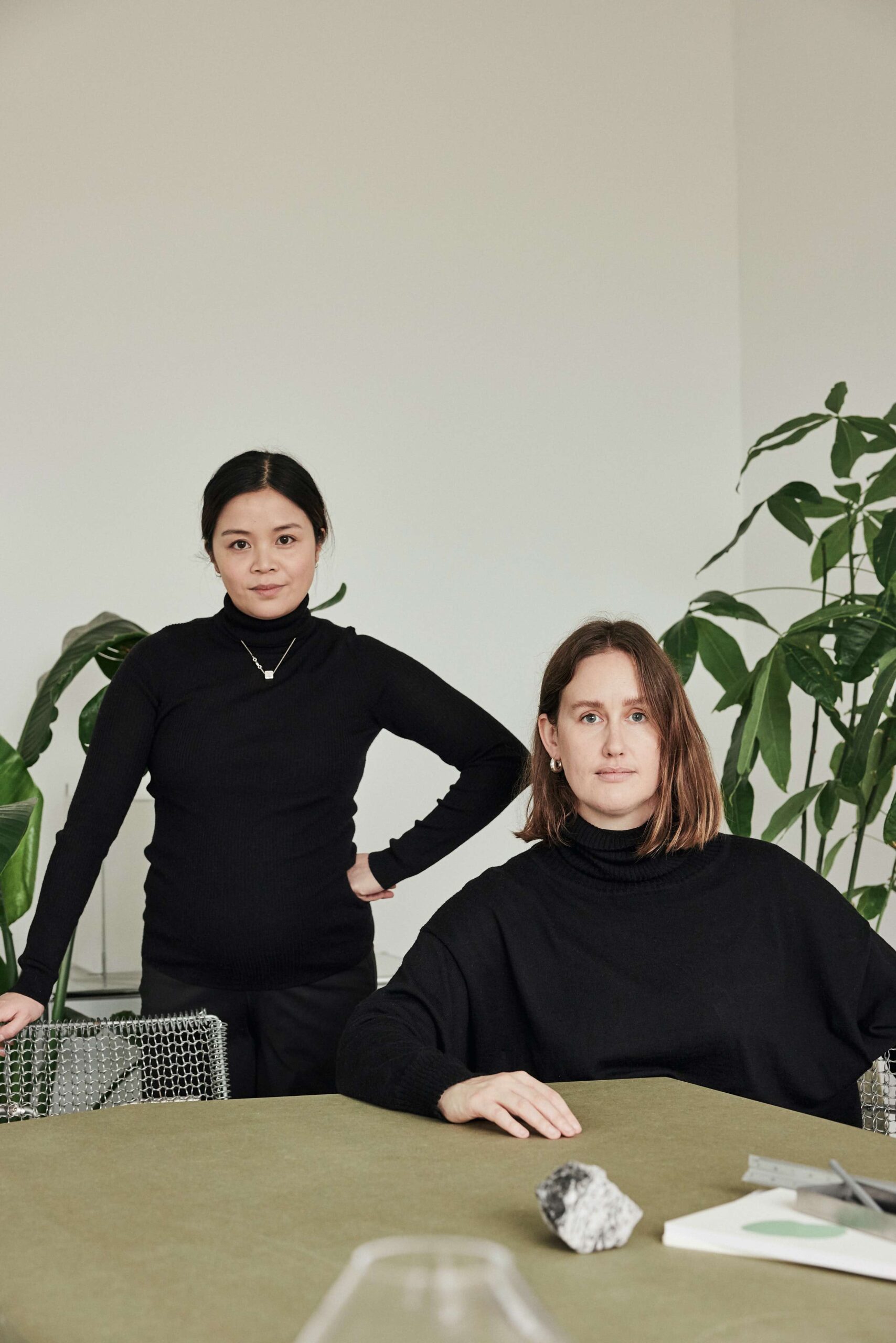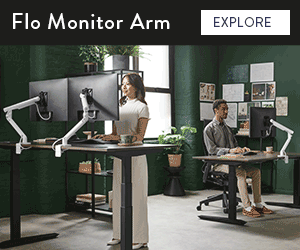
Retro interiors, computer games and sci-fi film sets inspired Josie de Guzman and Jess Murphy of Studio Jey to create ultra-cool headquarters for London-based web developer Midnight
For many businesses, adjusting to life in a post-pandemic world is an ongoing process full of both challenges and opportunities. Midnight, a London-based web development agency, is a case in point. It experienced dramatic growth during the pandemic yet was still located in a small office with most of the employees working remotely. The management team wanted to bring the entire company together in a single collaborative space, and approached Studio Jey to design an interior that would attract a team accustomed to working from home back into the office.
When approaching the rather open brief, Studio Jey – a partnership between stylist Jess Murphy and interior designer Josie de Guzman – looked to the past to define the future. The new office is located in Netil House, a landmark building in East London that dates back to the 1960s. Today, it is home to an impressive array of creative businesses and the popular Netil360 rooftop bar. The open-plan space for the new office features a number of original features – including Crittall windows and a painted concrete floor – and had been recently renovated, offering Studio Jey a blank canvas.

“We were inspired by the 1960s building and did a lot of research into retro office fitouts,” says Murphy. “We then started thinking about what it is Midnight does – essentially building things online – and that led us to thinking about building blocks, early computer systems and a Tetris-style, modular language. Even the floor plan is a Tetris-like ‘L’ shape.”
This open-plan L-shape has been divided into two sections, with a comfortable breakout area near the entrance and the workspace at the rear of the area running alongside a wall of Crittall windows that flood the interior with natural light – a deliberate decision to ensure an uplifting mood for desk work.
The block-like language that shapes the space is particularly evident in the custom furniture designed by Studio Jey. Take, for example, the central bank of desks. These are assembled using a series of slotted metal angles that visibly celebrate the modularity of the system, which has been designed to allow Midnight to reconfigure the desks as needed in the future.

“The desks are really jaunty and angular, with an exposed mechanical system that is very blocky and has a kind of ‘retro kit’ feeling,” says Murphy. “The intention is that they will get reconfigured over time, and we didn’t want that to be dictated by us.”
Studio Jey also designed a bespoke meeting room table and a custom console unit for the entrance. This appears to be a piece of furniture, but actually conceals a kitchenette with cutlery drawers and a small fridge. USM cabinets are another nod to the modular, industrial aesthetic.
Throughout, the interior is defined by a striking use of mixed metals, which are complemented by a theatrical silver curtain that separates the breakout area at the entrance from the workspace. “When working on this project we were engaged with a lot of sci-fi films – the angular language and architecture of Metropolis and the production design of Dead Ringers were floating around in my mind,” says Murphy. “We could see that kind of moody atmosphere and postmodern shapes working well in this project.”

To balance the potential coldness of the metals and the existing concrete, Studio Jey introduced abundant greenery, some of which has been playfully planted in inverted Martino Gamper some flexibility to collaborate in different ways. From the reconfigurable desks to the meeting room and the more casual breakout area, the space offers a diverse array of settings for different kinds of work.
“It was important that the interiors spell out that the team can work in different ways and that they aren’t tied to using the space in the way we designed it,” says Murphy. Perhaps most importantly, however, the new office is an exciting and welcoming space that makes the shift from remote working an attractive proposition and sets the scene for collaborative practice.
“Most of our projects are functionally led, whereas the Midnight office was led by aspiration,” says Murphy. “We wanted to create an environment that was inviting, comfortable and cool – and I think we succeeded in meeting that brief.”
Images by Charlie McKay
Enjoyed this article? Subscribe to our weekly newsletter here



























